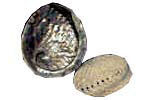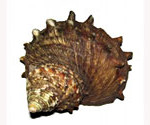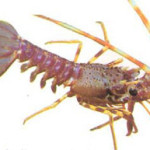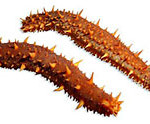
to genera, with some to species (Zostera asiatica and Z. marina)
Seagrass habitats in the region, as elsewhere in the world, have been lost, fragmented and damaged by development and poor catchment management, through practices such as sewage and stormwater discharges, urban runoff, dredging, boating and land reclamation.
Seagrass meadows play a key ecological role in the region’s coastal ecosystems and the loss of seagrass beds is considered to be one of the most serious issues facing the marine environment. Seagrass habitats support high primary productivity and host a wide variety of associated fauna including commercially important fishes.
The extent of seagrass beds is a good indicator of the ecological health of the marine environment. Healthy seagrass beds provide both habitat and food source, supporting biodiversity and stabilising the sea-bottom. Seagrasses are highly specialised marine flowering plants adapted to soft sediments of nearshore environments and which live totally submerged in water. They come complete with leaves, a rhizome (an underground, usually horizontally-oriented stem) and a root system. They are found in marine or estuarine waters. Most seagrass species are located in soft (that is, silty or sandy) sediments. There are thought to be less than 70 species of seagrasses worldwide, with around sixteen of these in the northwest pacific
The seagrass flora in Japan is characterized by the occurrence of several species of Zosteraceae that are considered to be endemic to the northwestern Pacific (Japanese, Korean and southeast Russian waters). These are Zostera asiatica, Z. caespitosa, Z. caulescens, Phyllospadix iwatensis and P. japonica. Among them, Zostera spp. generally occur at sub-tidal soft bottom in northern Japan, usually forming mixed-species seagrass beds with the cosmopolitan eelgrass Z. marina. Some of these species are now known only in a few localities around Japan and thus considered to be at risk of extinction. Basic information on distribution and quantitative aspects of their ecology and population genetic structure is urgently required for promoting effective and efficient conservation of these seagrasses
Zostera marina is the most common of all temperate seagrass species with a large variation in size being reported from 30 cm to over 200 cm long. The rhizome is brown with roots located only at the rhizome nodes. A single shoot occurs at the end of each rhizome. A single sheath encompasses 3-5 strap-shaped leaves. The leaf tip is rounded, sometimes with a very small point at the apex. Zostera asiatica is similar in appearance to Z. marina except that there are many more roots for each rhizome node and they sometimes emerge from the side of a short shoot. Multiple sheathes can occur on a single shoot, a characteristic not displayed by Z. marina.
When recording Seagrasses, please do not try to count individual plants – you will be there forever (or at least till you run low on air!). We just need to know that it is present, preferably by position fixing on GPS, the depth range and an estimated size of the bed or meadow. And if you can, identify the genus, or better still, the individual species.








Social Profiles